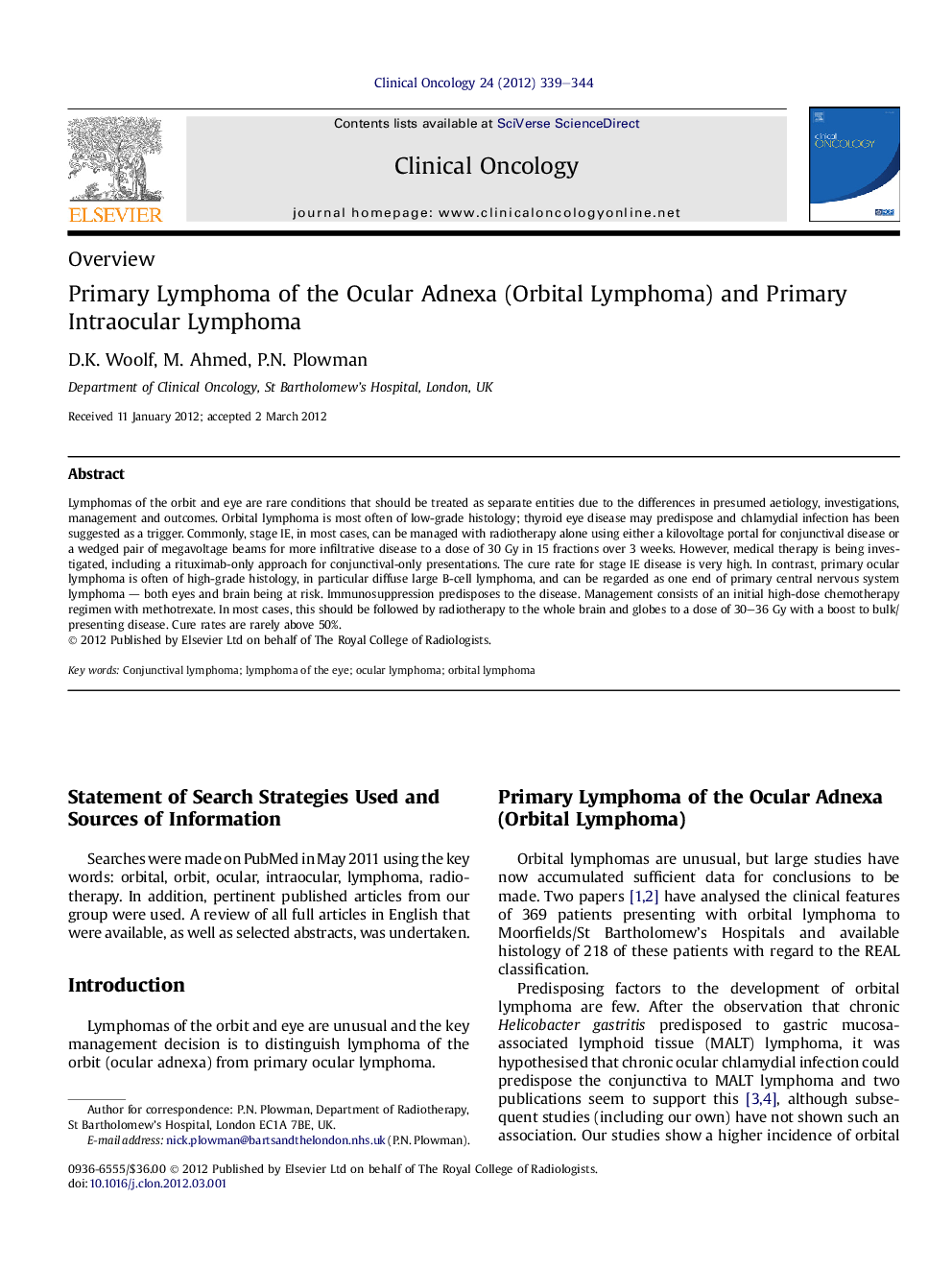| Article ID | Journal | Published Year | Pages | File Type |
|---|---|---|---|---|
| 5699714 | Clinical Oncology | 2012 | 6 Pages |
Abstract
Lymphomas of the orbit and eye are rare conditions that should be treated as separate entities due to the differences in presumed aetiology, investigations, management and outcomes. Orbital lymphoma is most often of low-grade histology; thyroid eye disease may predispose and chlamydial infection has been suggested as a trigger. Commonly, stage IE, in most cases, can be managed with radiotherapy alone using either a kilovoltage portal for conjunctival disease or a wedged pair of megavoltage beams for more infiltrative disease to a dose of 30Â Gy in 15 fractions over 3 weeks. However, medical therapy is being investigated, including a rituximab-only approach for conjunctival-only presentations. The cure rate for stage IE disease is very high. In contrast, primary ocular lymphoma is often of high-grade histology, in particular diffuse large B-cell lymphoma, and can be regarded as one end of primary central nervous system lymphoma - both eyes and brain being at risk. Immunosuppression predisposes to the disease. Management consists of an initial high-dose chemotherapy regimen with methotrexate. In most cases, this should be followed by radiotherapy to the whole brain and globes to a dose of 30-36Â Gy with a boost to bulk/presenting disease. Cure rates are rarely above 50%.
Related Topics
Health Sciences
Medicine and Dentistry
Oncology
Authors
D.K. Woolf, M. Ahmed, P.N. Plowman,
